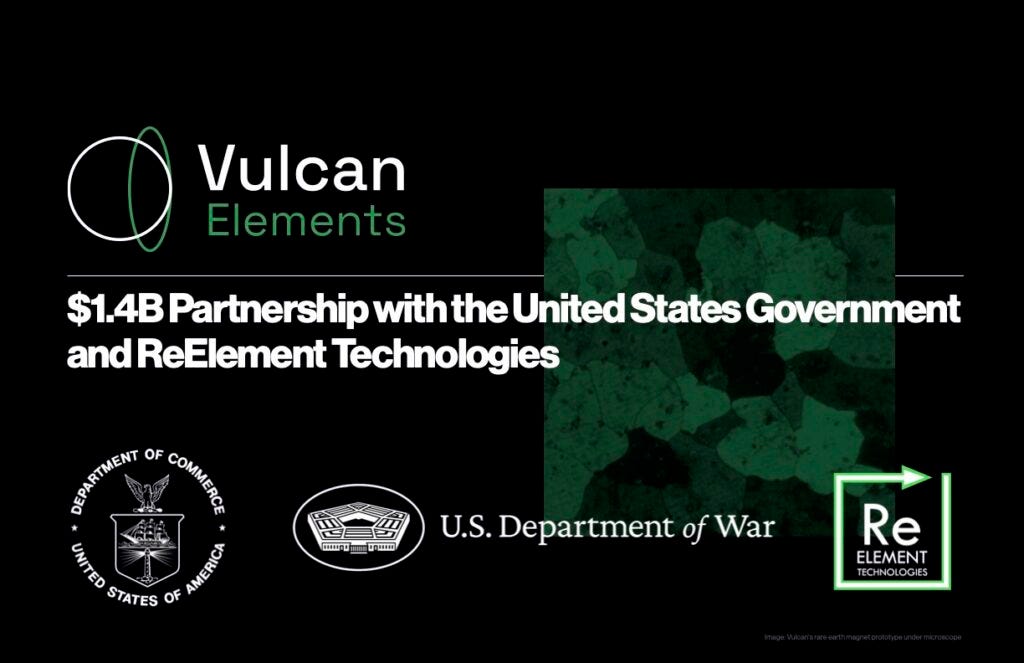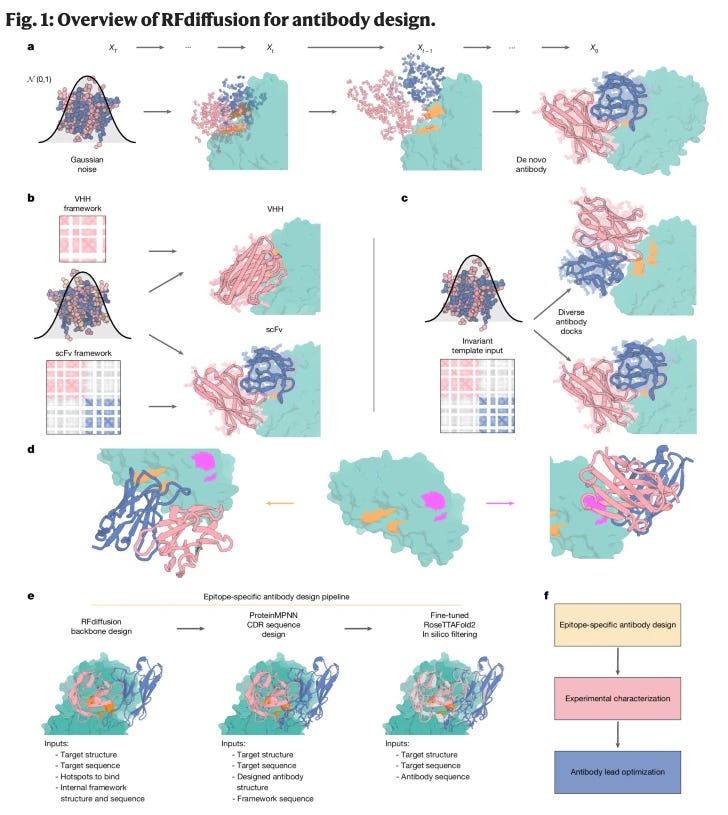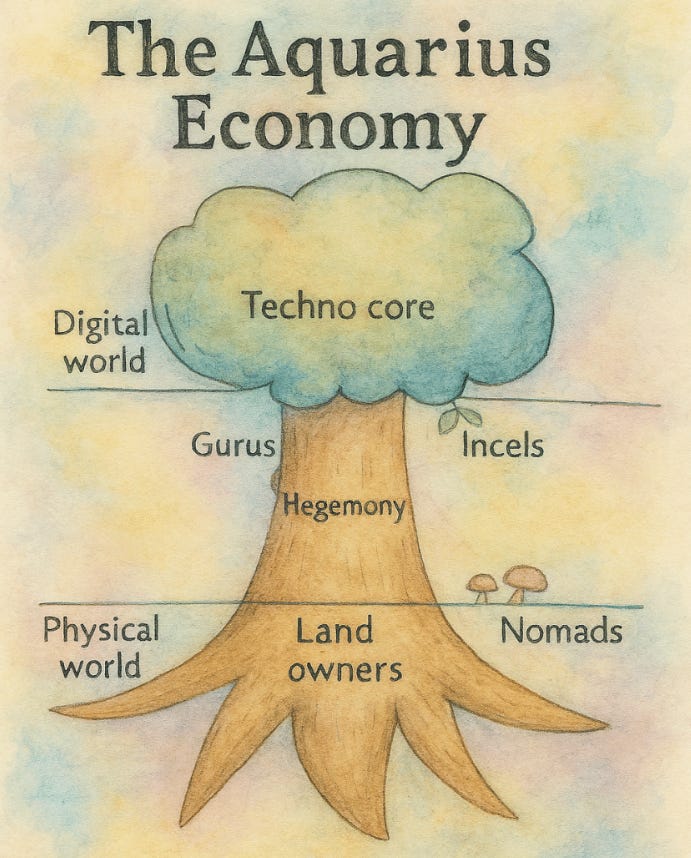Weekly Dose of Optimism #169
BIG WEEK IN SPACE, Poseidon, Vulcan's $1.4B, Antibody Design, Chinese TMSR, Aquarius Economy, Space DJ, and Three Things I enjoyed
Hi friends 👋 ,
Happy Friday! Tough week for capitalism in my home city of NYC, but, undeterred, capitalism decided to deliver a week jam-packed with technological and economic miracles. Go humans.
Let’s get to it.
Today’s Weekly Dose is brought to you by… Stripe Startups
Every venture-backed company — yes, you — should work with Stripe Startups.
Stripe’s mission is to increase the GDP of the internet, and it’s working. Last year, 1.3% of global GDP flowed through Stripe, over $1.4 trillion and growing. 78% of the Forbes AI 50 use Stripe’s financial infrastructure to monetize faster, experiment with pricing, and grow revenue.
As I wrote in my original Deep Dive, Stripe’s strategy from the earliest days has been to make it as easy as possible for startups to begin accepting payments, and then grow with them as they get really big. Little companies become big companies become public companies.
With Stripe Startups, they’re making it even easier.
Stripe Startups is the company’s new program designed to support early-stage, venture-backed businesses as they build, iterate, and scale. Founders enrolled in Stripe Startups get access to credits to offset Stripe fees, expert insights, and a focused community of other founders building on Stripe.
You’re going to use Stripe anyway. Get the white-glove experience.
(1) AN ASTRONOMICALLY BIG WEEK IN SPACE
On Halloween, Casey Handmer wrote a takedown of NASA and Lockheed Martin’s Orion Space Capsule that was so spicy he felt the need to include the following:
Lockheed isn’t Boeing but even so, I am not and have never been suicidal, I have 3 (soon to be 4!) children, and I intend to live a long and productive life.
He also wrote, “My purpose here is to entertain, inform, and motivate.” And while we can’t give Casey all of the credit, the week since he hit publish has seen the most space news since July 1969… we’ll just do it all here.
Jared Isaacman is BACK after President Trump renominated the entrepreneur, pilot, and two-time SpaceX flight self-financer to serve as NASA Administrator. Given his SpaceX flights, Isaacman is closely associated with Elon, and he’s beloved by startups in the industry. If confirmed, he would replace acting administrator Sean Duffy, who Casey depicted as the dog-in-burning-NASA-room in that picture above.
Google is Exploring Data Centers in Space through Project Suncatcher in order to “more of the sun’s power (which emits more power than 100 trillion times humanity’s total electricity production).” In partnership with Planet, they’ll send up their TPU AI chips on prototype satellites by early 2027.
This is particularly interesting given the debate around whether space data centers make any sense sparked by Starcloud’s announcement of a partnership with NVIDIA, and successful launch of its own prototype. Varda’s Andrew McCalip has the funniest breakdown here.
Elon Musk joined the space DC party, saying that SpaceX will also be doing them.
In more traditional satellite news, the WSJ reports that Elon Musk’s SpaceX is Set to Win $2 Billion Pentagon Satellite Deal as part of the Golden Dome project.
And Astranis announced a new product for warfighters and first responders: Astranis Vanguard. Per CEO John Gedmark, “Astranis Vanguard offers both defense and commercial customers the ability to quickly and easily spin up a resilient, self‑forming network capable of voice, video, and broadband data.”
Meanwhile, Vast Space, Jed McCaleb’s next-gen space station company which we’ve covered in a previous Dose, successfully launched its Haven Demo and deployed the solar array. Haven-1, Vast’s first crewed single-module space station, is scheduled for launch by May 2026. The 45-cubic-meter module features crew quarters with zero-G beds, a 1.1-meter domed window, deployable communal table, Starlink 24/7 communications, and capacity for microgravity research via Haven Lab.
Speaking of solar power in space, Star Catcher announced that it “just broke DARPA’s world record for optical power beaming,” by delivering 1.1 kilowatts of electrical power to standard satellite solar panels. For more, check Bloomberg.
Further afield, RocketLab is launching its ESCAPADE mission to study the history of Mars’ climate, which will be important if we want to reshape it in the future. Scientists believe Mars once possessed liquid water and thick atmospheres supporting potential habitability, but magnetic field shutdown approximately 3.5-4.1 billion years ago exposed the planet to continuous solar wind bombardment, progressively ejecting atmospheric gases into space. ESCAPADE plans to crack the case.
Finally, Inversion Space released a new video showing off its ARC spacecraft.
And all of this for less than the $30 billion that NASA has spent on Orion…
(2) Poseidon Aerospace Raises $11M to Build Autonomous Cargo Planes
Seagull is the beginning of the Poseidon adventure. In two years, the team hopes to have a 50-foot version of Seagull operational—capable of carrying two tons across 1,500 miles. If they succeed in making an economically-viable product, it’d unlock the next phase: a full-scale factory for mass production. From there, the vision only expands, and 50-feet starts to look small. — Zaitoon Zafar for Arena
Space may be the final frontier, but we’re still improving how we fly things down here, too.
On Wednesday, Poseidon Aerospace announced that they raised $11 million from our friends at Tamarack Global to build autonomous ground-effect vehicles. Part boat, part plane, “Riding on a cushion of air just above the water’s surface, these vehicles harness the aerodynamic phenomenon known as ground effect,” Zaitoon Zafar writes in a profile of the company for Arena.
With the money, Poseidon plans to build Seagull, a 13-foot craft with a 120-mile range capable of carrying a 45-pound payload, before scaling up to the 50-foot version, which will carry two tons over 1,500 miles.
According to the Arena profile, the company will target cargo - where it can carry heavier payloads than drones, faster than cargo ships - and military applications, like coastal surveillance and anti-submarine warfare.
You can learn more about Poseidon in Ti Morse’s conversation with CEO David Zagaynov above, or just spend a second imagining a future in which these big chonky guys are skimming around our waters, delivering goods, food, and medicines.
(3) Vulcan Elements Secures $1.4B Partnership with the United States Government
Vulcan Elements and ReElement Technologies will scale their 100% vertically-integrated, domestic magnet supply chain, which is already operating today, to enable 10,000 tonnes of annual magnet production—with a focus on recycling end-of-life magnets and electronic waste.
The rare earth magnets are coming home.
In The Electric Slide, Sam D’Amico and I went deep on the importance of rare earth magnets to everything electric, their history (“So on the same day that Sagawa presented Sumitomo’s Nd₂Fe₁₄B compound, Croat presented GM’s exact same Nd₂Fe₁₄B compound!”), and America’s epic fumble of rare earth magnets leadership (GM sold Magnequench to Deng Xiaoping’s sons-in-law). We pointed out that China now controls 90% of rare earth magnets production, a capability that has proven useful in trade negotiations with the US. And we mentioned one company that was working to fix the problem: Vulcan Elements.
Vulcan Elements recently announced a $65 million Series A to build fully decoupled neodymium magnet manufacturing in Durham, North Carolina, less than 30 minutes away from NC State, where Baliga is still the Progress Energy Distinguished University Emeritus Professor of Electrical and Computer Engineering. They have a roadmap to producing cheaper neo magnets than China with better chemistry, modern manufacturing, and yes, a little AI.
I’ve gotten to travel down to Durham to spend time with John Maslin and the Vulcan team in the first magnet facility. The plan, as we’d discussed it, was to scale that up to 2,000 tonnes of capacity in the next facility, and then up to 10,000 tonnes after that.
Now, thanks to a $1.4 billion partnership between the USG and Vulcan and ReElement technologies (which provides rare earth oxides from recycled materials) to scale right up to 10,000 tonnes of fully decoupled neodymium magnets.
The world produces about 385,000 tonnes of rare earth magnets a year, so 10,000 tonnes is not going to make America the world’s magnet powerhouse overnight, but dominating magnets isn’t the goal. This is a critical step to producing enough of them locally that we aren’t entirely at the mercy of China and global supply chains.
The Vulcan expansion will be financed by a $620 million loan from the Department of War’s Office of Strategic Capital, $50 million of federal incentives from the CHIPS Act, and $550 million of private capital, in addition to an $80 million loan and matching private capital for ReElement. In exchange, the DoW will get warrants in Vulcan and ReElement, and the Department of Commerce will get $50 million of equity in Vulcan.
Now that’s an… attractive … deal.
(4) Atomically accurate de novo design of antibodies with RFdiffusion
From Nature
Our approach establishes a framework for the computational design, screening and characterization of fully de novo antibodies with atomic-level precision in both structure and epitope targeting.
A research team led by Nathaniel Bennett and David Baker from the Institute for Protein Design at University of Washington developed RFdiffusion, an diffusion-based AI model capable of designing full-length antibodies de novo (directly in silico (in the computer)) tailored to bind specified epitopes (the specific part of an antigen that an antibody or T-cell receptor binds to during an immune response) with atomic accuracy.
Published in Nature, the study demonstrates that RFdiffusion can generate antibodies with accurately constructed binding loops (CDRs), long known as the most challenging and variable region for antibody design due to their flexibility and crucial role in target recognition. It’s a big step in rational antibody drug engineering.
In the study, the team showed precise binding to a wide range of targets including influenza virus hemagglutinin, bacterial toxins, and cancer-associated peptides.
If antibodies are keys and epitopes are locks, the way we do antibody discovery today is like trying a box full of keys on the lock until something works, but also, the lock is inside of an animal. Scientists had to inject animals with a target (like a virus piece), wait for their immune system to make antibodies, then test hundreds of them to find one that worked. It took months or years.
RFDiffusion can just look at the lock and design the right key, with each of its teeth (the CDRs in this now-tortured analogy) exactly the right shape.
This could unlock (ok, I’m done) drug development in weeks instead of years, targeting currently undruggable diseases, and more stable and effective antibodies.
Will it work? Capitalism thinks so, or at least that the prize is big enough to give it the ol’ college try. A company called Xaira, led by Baker and Nobel laureates, was founded with a healthy $1 billion is advancing this technology towards scalable virtual cell modeling and practical biologics development.
It remains the worst time in human history to be a disease.
(5) China Achieves First-Ever Thorium-to-Uranium Nuclear Fuel Conversion
From Nick Touran
China has successfully achieved the first-ever thorium-to-uranium nuclear fuel conversion in a Thorium Molten Salt Reactor (TMSR). The US ran a MSR on Uranium-233 derived from Thorium in the late 1960s, but we never did the conversion in a MSR itself (we made it in solid-fueled thorium reactors).
If you spend enough time writing and podcasting about nuclear, you’ll inevitably get hit with, “But what about Thorium?!” from internet commentors. I’ve gotten that a lot. Thorium Molten Salt Reactors (TMSR) have a bunch of advantages, including:
Thorium is 4x more abundant than uranium
It can’t easily be weaponized
It produces much less waste because it burns ~95% of fuel compared to ~5%
It cools without water and runs at atmospheric pressure
It’s walk-away safe - if everything broke, physics would shut the reactor down
The answer has been: it’s a cool idea, but no one has actually done the thorium-to-uranium conversion in an MSR… until now!
The Chinese Academy of Sciences’ Shanghai Institute of Applied Physics (SINAP) announced on Saturday that it “has successfully achieved the first-ever thorium to uranium nuclear fuel conversion in a Thorium Molten Salt Reactor (TMSR), and obtained valid experimental data following thorium fuel loading, confirming the technical feasibility of thorium utilization in a molten-salt reactor nuclear energy system.”
SINAP has been working on its TMSR program since 2011, and with this proof point, according to Xinhua, “it will work with leading energy companies to consolidate the TMSR industrial and supply chains, and accelerate technology iteration and engineering application.”
If we’ve learned anything from rare earth magnets, they’ll probably do it, despite the fact that, as with rare earth magnets, America first invented the technology at Oak Ridge in the 1960s. This is the Electric Slide playbook — the West invents, China scales — playing out again.
China’s goal is to construct a 100-megawatt demonstration project by 2035, so it will be a while before TMSRs make a dent in the power supply picture. By then, I hope we have dozens of gigawatts of new nuclear power online.
Bonus: The Aquarius Economy
By Aubrie Pagano & Josh Jagota at Alpaca
I operate by a bit of a code: if someone is an investor in Earth AI, I like them. Ian at Cantos, John & Jamie at Tamarack Global. Great people. Great taste. So when I met Aubrie Pagano, who invested in Earth AI at her firm Alpaca, I knew off the bat that I’d like her, too.
Then she shared an essay that she was working on describing what she calls The Aquarius Economy, a post-AGI “emergent, higher-order future filled with the possibility of maximizing the human spirit.”
As both an Aquarius myself, and someone who agrees strongly with the premise that AI will bring and equal and opposite focus on enhancing what makes humans so great, I thought it was one of the weirder papers a VC has written recently.
BONUS 2: Space DJ
From Google DeepMind
OK OK one more space thing, kind of. Google DeepMind, which … is really the only major AI Lab doing weird, interesting stuff that I resonate with, released Space DJ, which lets you fly a little spaceship around to different genres of music and generate songs that mashup those genres. It’s fun, play with it.
On the same day, yesterday, GDM also dropped a paper with Terence Tao on using AlphaEvolve for mathematical exploration at scale and AI tools that can “monitor endangered species, protect forests, and listen to birds.”
Google’s got its groove back.
TRIPLE BONUS: Three Things I Enjoyed
Brie Wolfson on her time Inside Cursor
Tom Morgan on bioelectricity x consciousness
Chris Sacca on Dialectic with Jackson Dahl
Have a great weekend y’all.
Thanks to Aman and Sehaj for uncovering so many great stories, and for Stripe Startups for sponsoring. Go get the white glove startup treatment.
We’ll be back in your inbox next week.
Thanks for reading,
Packy










Aquarius Economy... something to look forward to... and it's within our grasp...
:-)
what a weird paper for a VC to write indeed. but hey, aquarius here too!! it’s our eon, LFG 😛